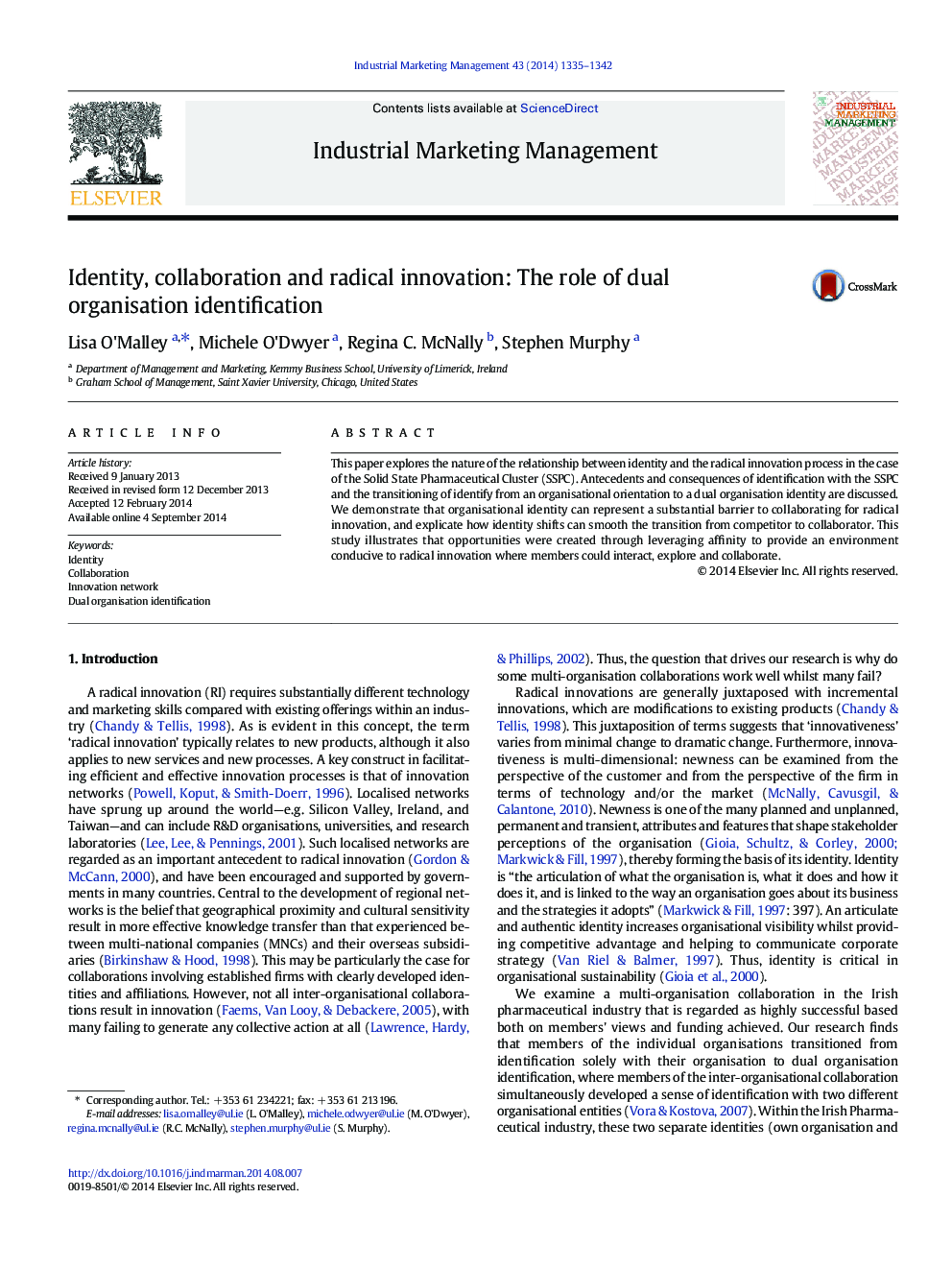| Article ID | Journal | Published Year | Pages | File Type |
|---|---|---|---|---|
| 1027556 | Industrial Marketing Management | 2014 | 8 Pages |
•Identification with a parent organisation can be a barrier to collaboration for subsidiaries within regional networks•Working together on a specific common problem is fundamental to learning how to collaborate.•Dual organizational identification allows individuals to contribute to multiple agendas without conflict of interest.•Collaboration should not be overprescribed at the outset as this limits the possibilities for RI.
This paper explores the nature of the relationship between identity and the radical innovation process in the case of the Solid State Pharmaceutical Cluster (SSPC). Antecedents and consequences of identification with the SSPC and the transitioning of identify from an organisational orientation to a dual organisation identity are discussed. We demonstrate that organisational identity can represent a substantial barrier to collaborating for radical innovation, and explicate how identity shifts can smooth the transition from competitor to collaborator. This study illustrates that opportunities were created through leveraging affinity to provide an environment conducive to radical innovation where members could interact, explore and collaborate.
